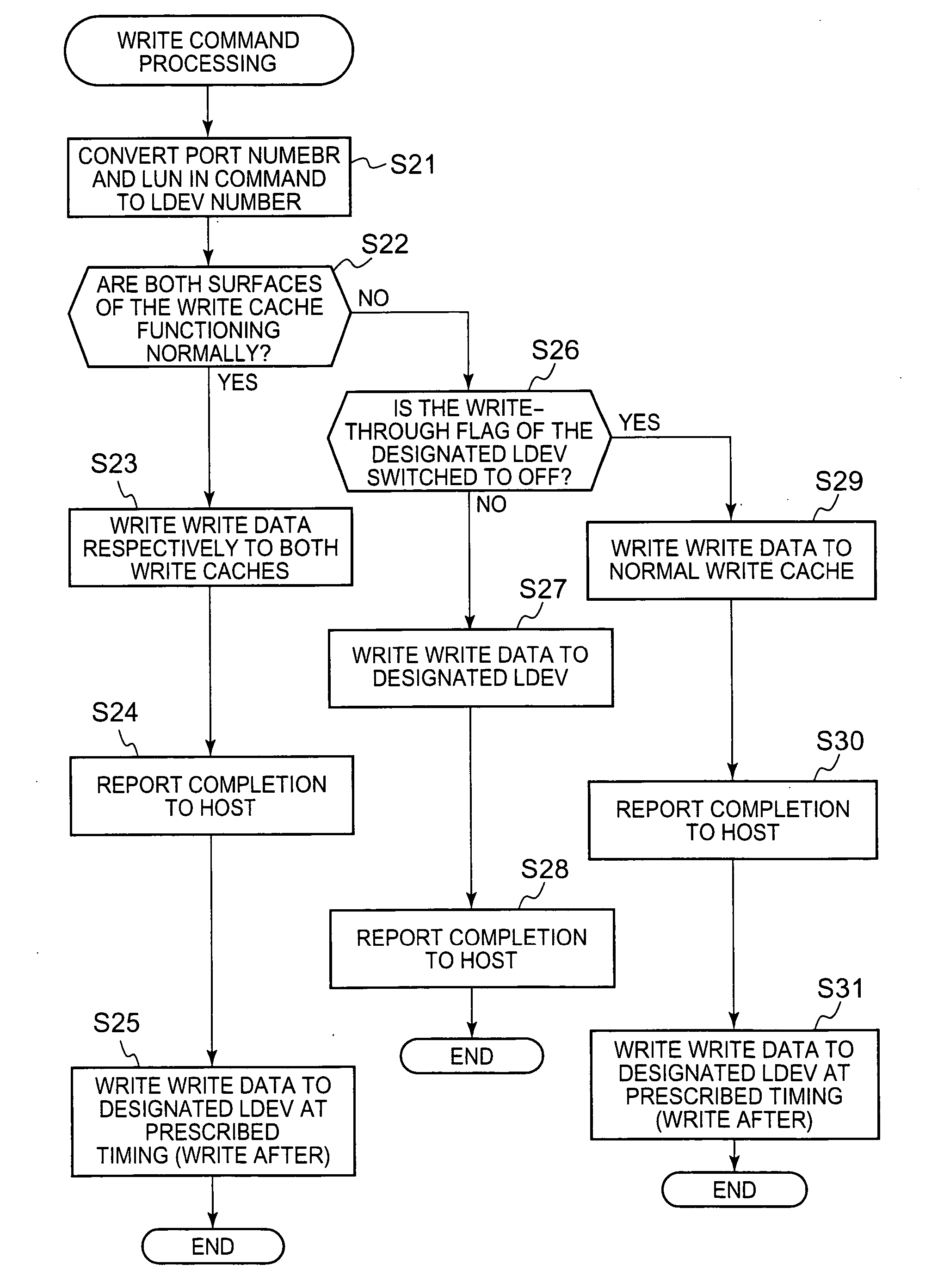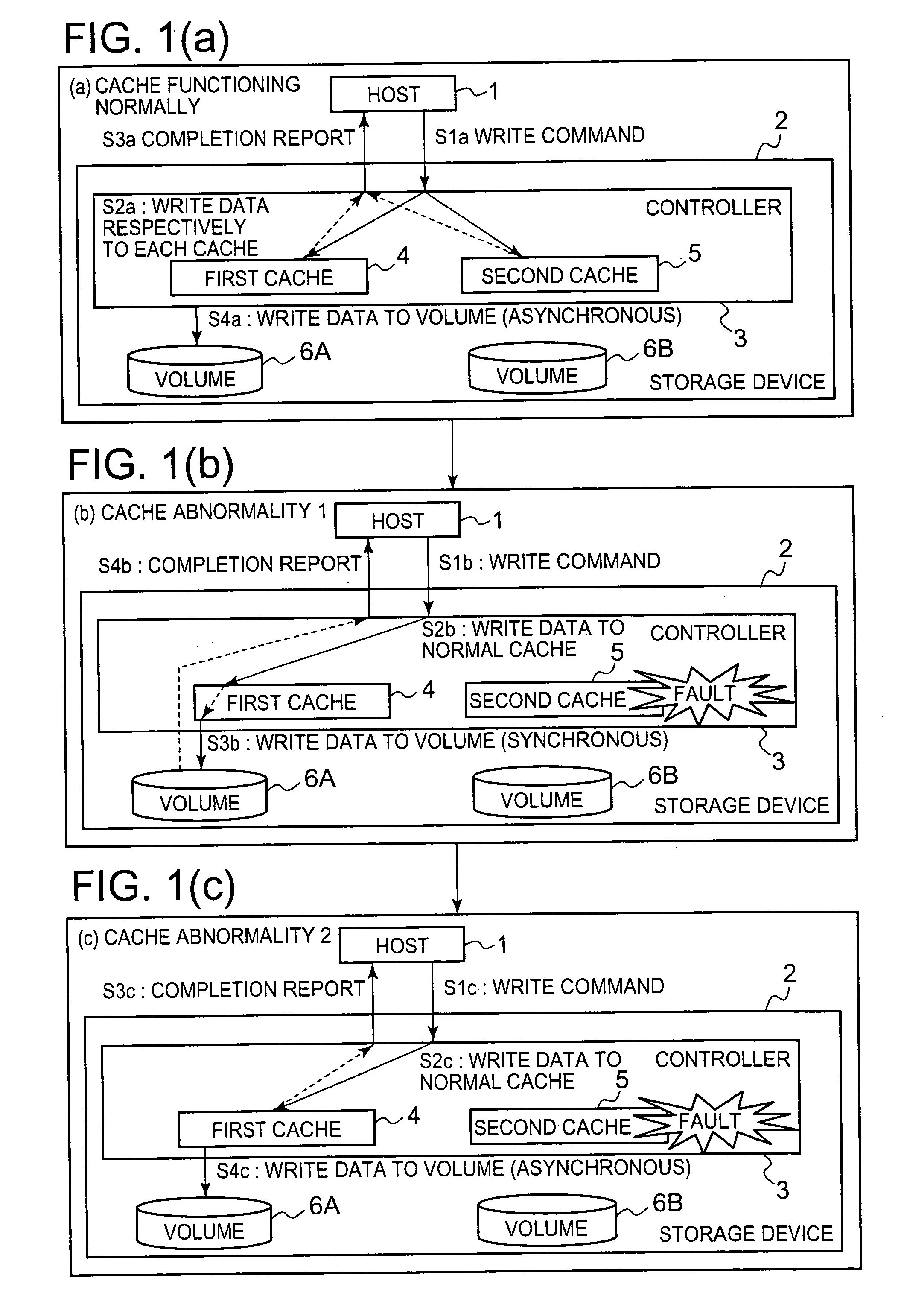Storage device and write access processing method for storage device
- Summary
- Abstract
- Description
- Claims
- Application Information
AI Technical Summary
Benefits of technology
Problems solved by technology
Method used
Image
Examples
first embodiment
1. First Embodiment
[0073]FIG. 2 is a block diagram of a storage system. This storage system may be constituted by comprising, for example, at least one or more host 10, at least one or more storage device 100, switches 20 for constituting a communications network between the host(s) 10 and the storage device 100, and a management terminal 30. As described hereinafter, the storage system may be constituted by comprising a plurality of storage devices 100 and 200.
[0074] Hosts 10 can be divided broadly into so-called open type host and mainframe type hosts, for example. Examples of an open type host include server machines which run a generic OS (Operating System), such as Windows (registered trademark), UNIX (registered trademark), or the like, and access the storage device 100 by means of a relatively generic communications protocol, such as FC (Fiber Channel), iSCSI (Internet SCSI), TCP / IP (Transmission Control Protocol / Internet Protocol), or the like. Examples of a mainframe type ...
second embodiment
2. Second Embodiment
[0141] A second embodiment of the present invention is now described on the basis of FIG. 15 to FIG. 17. The respective embodiments described below correspond to modifications of the first embodiment. The characteristic feature of this embodiment lies in the fact that when the processing mode is changed for any one LDEV of the plurality of LDEVs constituting one LU, the processing modes for the other LDEVs are also changed automatically.
[0142] As shown by the LDEV number conversion table T3 in FIG. 15, one LU “#0” is constituted by two LDEVs, LDEV “#0” and LDEV “#10”, for example. FIG. 16 is a flowchart showing a write-through flag setting process and correcting process. In the present embodiment, when the write-through flag of a prescribed LDEV is changed by means of the SVP 170, the write-through flags of the other LDEVs related to that LDEV are also changed automatically by the CHA 110.
[0143] The processing in S11-S15 has already been described and hence fur...
third embodiment
3. Third Embodiment
[0147]FIG. 18 is a flowchart showing a write-through flag setting process relating to a third embodiment of the present invention. In the present embodiment, the operations of setting and correcting the write-through flags are both executed by the SVP 170.
[0148] More specifically, a user logs in to the SVP 170 via the management terminal 30 (S131), calls up a parity group management screen (S132), and sets a write-through flag independently, for a desired LDEV (S133).
[0149] When the user has finished setting the write-through flag, the SVP 170 detects the LDEVs belonging to the same LU (S134), and examines whether or not the write-through flags of the group of mutually related LDEVs are matching (S135). If the write-through flags of the group of related LDEVs are not matching (S136: NO), then the SVP 170 harmonizes the write-through flags by means of a similar method to that described in the previous embodiment (S137). As stated in the first embodiment, the SVP ...
PUM
 Login to View More
Login to View More Abstract
Description
Claims
Application Information
 Login to View More
Login to View More - R&D
- Intellectual Property
- Life Sciences
- Materials
- Tech Scout
- Unparalleled Data Quality
- Higher Quality Content
- 60% Fewer Hallucinations
Browse by: Latest US Patents, China's latest patents, Technical Efficacy Thesaurus, Application Domain, Technology Topic, Popular Technical Reports.
© 2025 PatSnap. All rights reserved.Legal|Privacy policy|Modern Slavery Act Transparency Statement|Sitemap|About US| Contact US: help@patsnap.com



